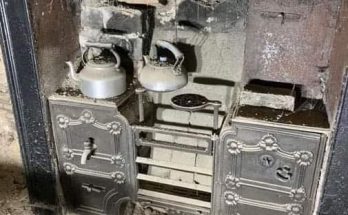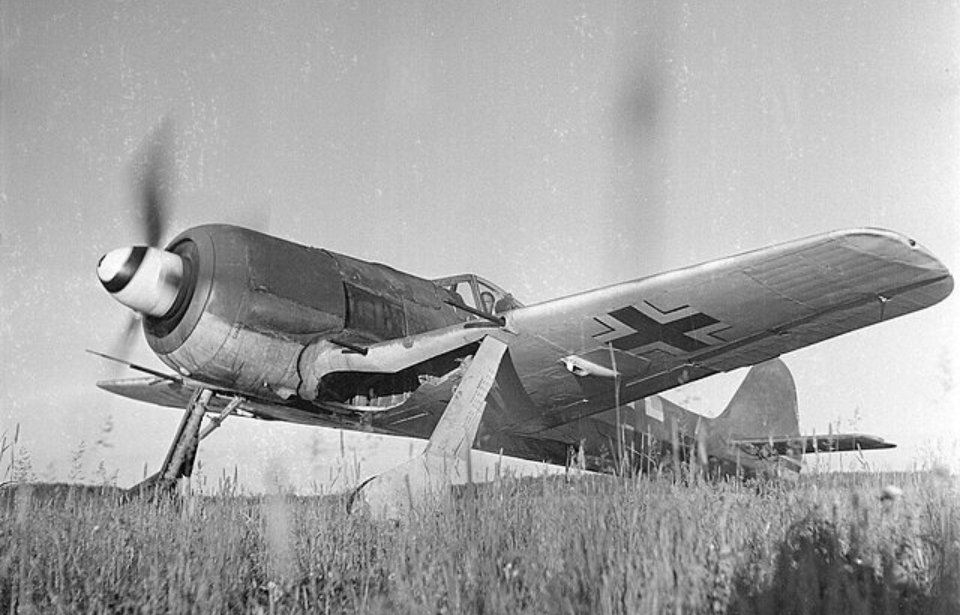
In the early stages of World War II, aerial combat over Europe was dominated by two particular aircraft: the Messerschmitt Bf 109 and Supermarine Spitfire. Both received numerous upgrades, but the Spitfire edged ahead of the Bf 109 in many respects. However, in 1941, the Royal Air Force (RAF) suddenly lost its air superiority when the Focke-Wulf Fw 190 arrived. As the conflict raged, the Germans continued to develop the FW 190, with one, the Sturmböcke, designed to hunt bombers.
Focke-Wulf Fw 190 Würger
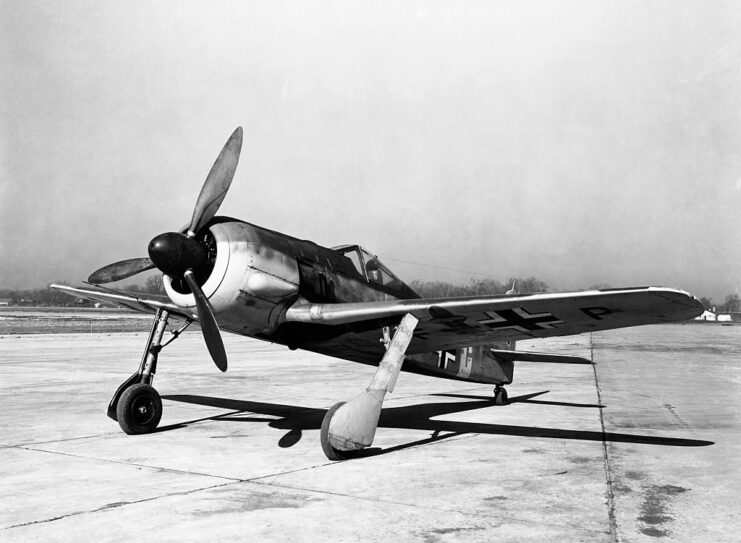
The Focke-Wulf Fw 190 Würger quickly proved to be a formidable opponent for Allied aircraft. Developed in the late 1930s, it fast became a central part of the Luftwaffe‘s Jagdwaffe, along with the Messerschmitt Bf 109. Its most numerous variant, the Fw 190 A-8, was powered by a BMW 801D-2 14-cylinder air-cooled radial engine piston that allowed it to travel at 405 MPH. In terms of armament, it carried four 20 mm autocannons and two 13 mm MG 131 machine guns.
Furthermore, the Fw 190 was very maneuverable and was able to keep up with the Supermarine Spitfire, which was world-famous for its excellent handling. Its powerful engine meant it could carry impressive loads and slip into a multitude of roles, and it soon proved itself to be a proficient ground attack aircraft.
Need for an interceptor
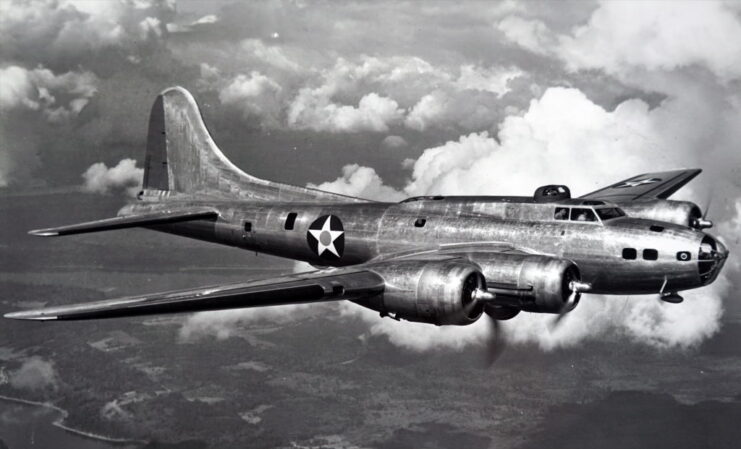
The Focke-Wulf Fw 190’s excellent performance decreased at altitudes upwards of 20,000 ft. As a result, the one area where the aircraft was quite poor was as a high-altitude interceptor. This was a real issue for the Germans, as Allied bombing missions were often conducted at heights exceeding this.
To make things worse, the Fw 190’s standard armament wasn’t ideal for bringing down heavy bombers. Meanwhile, American bombers were bristling with machine guns. Flying in combat boxes, a group of Boeing B-17 Flying Fortresses could bring more than 100 .50-caliber machine guns to bear on a target.
The Luftwaffe was aware of the Fw 190’s drawbacks and released different versions designed to improve its handling as World War II progressed. Initially, it sent the larger Messerschmitt Bf 110Gs to shoot down bombers, but these were easy pickings for later Allied escort aircraft.
That’s when the Fw 190 Sturmböcke came into existence.
Introducing the Fock-Wulf Fw 190 Sturmböcke
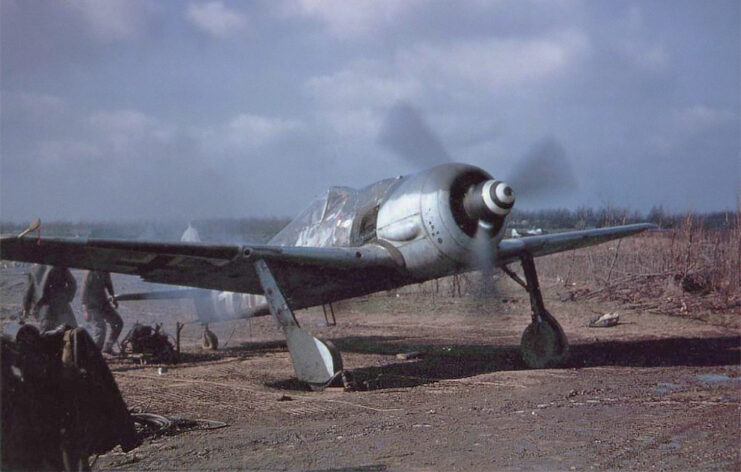
The Focke-Wulf Fw 190 had several traits that made it an ideal choice as an anti-bomber. Its air-cooled radial engine could hold up against significant damage, as it didn’t have a vulnerable cooling system; it was a significant mass of metal at the front of the aircraft that served as a form of armor protection. The Fw 190 was also a very stable aircraft, which helped pilots accurately place shots into Allied bombers.
The first Fw 190 Sturmböcke had its wings modified and two 20 mm cannons removed. Then, four 20 mm cannons were hung under the wings in pods.
After the first aircraft was delivered in late 1943, it was decided that the two wing-mounted cannons would be replaced with 30 mm ones. These were enormously powerful, capable of ripping a Boeing B-17 Flying Fortress apart in a couple of shots. Despite their power, they didn’t add too much weight, as they were mostly comprised of stamped steel construction. This version was designated the “Fw 190 A-6/R2.”
Further modifications added a nitrous oxide boost, which increased engine power at high altitudes for short durations. The Fw 190 Sturmböcke also received heavy armor plating around the cockpit, enabling pilots to fly through the intense defensive fire coming from bombers. The aircraft was fitted with 30 mm of armored glass and a pair of heavy, unguided air-to-air rockets.
A-7 and A-8 versions of the Fw 190 were turned into Sturmböcke variants, too, with the A-8/R2 being manufactured in the largest numbers.
A fearsome, yet cumbersome encounter in the skies over Europe
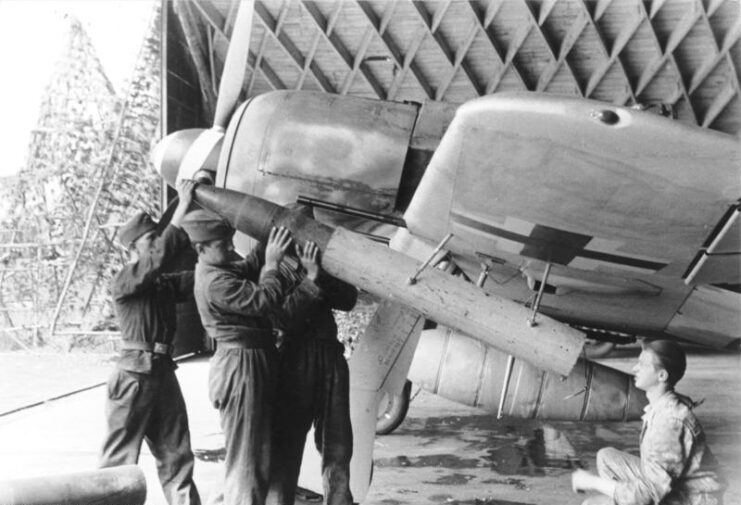
These changes transformed the Focke-Wulkf Fw 190 Sturmböcke into a deadly bomber-hunter, needing only a couple of 30 mm rounds to knock one out of the sky. However, it also made the German aircraft cumbersome. This weight negatively impacted their performance and made them vulnerable to Allied escort fighters. As such, they needed to be escorted by Messerschmitt Bf 109s.
Pilots who flew these Fw 190 Sturmböcke mentioned the deadly assortment of weapons. They also appreciated its heavy armor for keeping them alive through the frequent onslaught of enemy fire. However, as mentioned, these modifications took a toll on the aircraft and made it sluggish at high altitudes.



